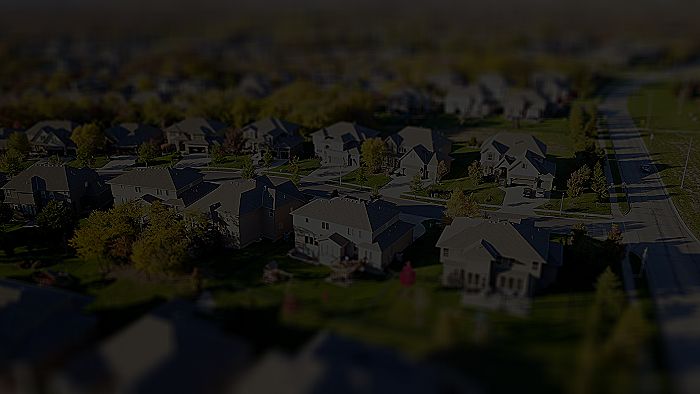Insurance often feels like a costly monthly expense that delivers little tangible value—until disaster strikes. While no one enjoys paying premiums, the alternative can be financially devastating in ways that extend far beyond the obvious. The true costs of being uninsured involve hidden financial traps, long-term consequences, and lost opportunities that can affect everything from your credit score to your physical health. This reality check examines what really happens when you're caught without coverage—and why even minimal insurance protection might be more valuable than you realize.
The Medical Catastrophe: When Illness Becomes Financial Ruin
Perhaps nowhere are the consequences of being uninsured more severe than in healthcare. While many people assume they can simply avoid medical costs by staying healthy, this perspective ignores both biological reality and statistical inevitability.
"The notion that you can opt out of healthcare costs by not purchasing insurance fundamentally misunderstands how human bodies work," explains Dr. Michael Chen, health policy researcher at Stanford University. "Eventually, everyone needs medical care. The only questions are when, how urgently, and at what cost."
The financial consequences of facing a serious medical condition without insurance are staggering. A 2019 study published in the American Journal of Public Health found that 66.5% of all bankruptcies were tied to medical issues—either the high costs of medical care or time away from work due to illness. The study's lead author, Dr. David Himmelstein, noted that "even the best job with the best health insurance isn't much protection" against crushing medical expenses.
Those without insurance face even grimmer prospects. Consider these average costs for common medical scenarios:
- Three-day hospital stay: $30,000
- Appendectomy: $33,000
- Heart bypass surgery: $123,000
- Cancer treatment: $150,000 to over $1 million
- Broken leg: $7,500
"When you're uninsured and face these costs, you essentially have three options, none of them good," explains healthcare advocate Maria Rodriguez. "You can attempt to negotiate with providers, pursue charity care if you qualify, or face financial devastation."
While hospitals are required to provide emergency care regardless of insurance status, that care isn't free. Emergency rooms are also the most expensive place to receive care, with average visits costing $1,389 according to a Kaiser Family Foundation analysis—over 12 times more than a visit to a primary care physician.
What many don't realize is that being uninsured affects not just the care you receive in emergencies, but in chronic conditions as well. A landmark study in the New England Journal of Medicine found that uninsured adults were significantly less likely to receive screening for common cancers, resulting in later-stage diagnoses and higher mortality rates when cancer was detected.
"The cost avoidance that happens when people are uninsured creates a dangerous feedback loop," notes Dr. Elena Martinez from the Centers for Disease Control and Prevention. "Minor conditions go untreated until they become major, preventable diseases progress until they require emergency intervention, and manageable chronic conditions develop serious complications. In every case, the financial cost skyrockets while health outcomes deteriorate."
Auto Disasters: The Financial Crash After the Physical Crash
Driving without auto insurance might seem like a calculated risk, especially for those with clean driving records and financial constraints. However, the reality of what happens after even a moderate accident without coverage reveals why this gamble rarely pays off.
"Many people focus solely on the risk of causing an accident when deciding whether to carry insurance," explains Thomas Reynolds, auto insurance specialist. "But that's only part of the equation. You're also exposed to damage from uninsured drivers, theft, vandalism, and natural events like hail or falling trees."
The financial consequences of being uninsured in an at-fault accident can be immediate and severe:
- Property damage liability: The average cost for property damage in an accident is approximately $4,700, but can easily reach tens of thousands for luxury vehicles or if multiple cars are involved.
- Bodily injury costs: Medical expenses, lost wages, and pain and suffering for those injured can range from thousands to millions of dollars, with the average bodily injury claim at approximately $20,000.
- Legal expenses: If you're sued for damages exceeding your assets, the legal defense costs alone can exceed $10,000, even before any judgment.
Beyond these immediate costs, uninsured drivers face a cascade of secondary financial consequences:
- License suspension: Most states suspend the licenses of uninsured drivers involved in accidents until they can prove financial responsibility.
- Registration suspension: Vehicle registrations are typically suspended along with licenses, resulting in additional reinstatement fees.
- SR-22 requirements: States generally require SR-22 forms (proof of financial responsibility) for 3-5 years after driving uninsured, substantially increasing future insurance costs.
- Collection actions: Unpaid damages often result in collection actions that damage credit scores for up to seven years.
- Wage garnishment: Courts can order up to 25% of disposable income garnished to satisfy judgments from accidents.
"The financial aftermath extends well beyond the initial accident," notes Reynolds. "I've seen cases where a single uninsured accident resulted in over $100,000 in total costs when you factor in medical bills, property damage, legal expenses, increased insurance premiums, and lost income during license suspension."
Even when uninsured drivers aren't at fault, they often face significant financial challenges. In states with no-fault insurance systems or those requiring personal injury protection, uninsured drivers may be unable to recover certain damages. Additionally, about 13% of motorists nationwide are uninsured, according to the Insurance Research Council, creating substantial risk of being hit by another driver without coverage.
"The economic choice to drop auto insurance only works if you never have an accident, your car is never stolen or vandalized, and you're never hit by an uninsured driver," explains consumer financial advisor Jessica Wong. "Given that the average driver files an insurance claim approximately once every 17.9 years, most people will face at least one of these scenarios during their driving lifetime."
Home Hazards: When Your Biggest Asset Becomes Your Biggest Liability
For most Americans, their home represents their largest financial asset. Yet approximately 5% of homeowners have no insurance protection, and many more are significantly underinsured. The consequences of this gap become painfully apparent when disaster strikes.
"Total property loss without insurance is perhaps the most financially devastating scenario a family can face," explains disaster recovery specialist Michael Torres. "Unlike medical bills, which can sometimes be negotiated or discharged in bankruptcy, losing your home without insurance typically means losing both your shelter and your largest financial asset simultaneously."
Consider these average costs for common home disasters:
- Fire damage: $12,000 to complete destruction (national average claim: $79,785)
- Water damage: $2,500 to $45,000 depending on extent
- Wind/hail damage: $10,000 to $20,000 (national average claim: $11,695)
- Liability for serious injury on property: $100,000 to $1 million+
The financial impact extends beyond the immediate repair costs. Uninsured homeowners facing substantial damage often encounter a cascade of additional challenges:
- Mortgage default: Lenders require full repayment of mortgages even if the home is destroyed
- Temporary housing costs: Families must fund alternative housing while repairs are made
- Lost equity: Years or decades of mortgage payments and appreciation can vanish overnight
- Municipal penalties: Damaged homes that aren't repaired can face significant city code violation fines
"After Hurricane Harvey, I worked with numerous uninsured homeowners who faced impossible financial choices," recalls Torres. "Many had to continue paying mortgages on uninhabitable homes while also covering rental costs elsewhere. Without the resources to rebuild, some eventually faced foreclosure on properties they could neither sell nor occupy."
The liability risks of homeownership present another often-overlooked exposure. Homeowners can be held liable for injuries occurring on their property, with potential judgments far exceeding the value of the home itself.
"A client of mine faced a $750,000 judgment after a delivery person slipped on their icy walkway and suffered a traumatic brain injury," notes personal injury attorney Sarah Chen. "Without homeowners insurance, they were forced to sell their property and still faced wage garnishment for years afterward."
While mortgage lenders require insurance, approximately 35% of homes are owned outright with no mortgage requirement. Additionally, when homeowners face financial hardship, insurance is often one of the first expenses cut—a decision that can backfire catastrophically.
"The savings from dropping homeowners insurance—typically $1,200 to $1,800 annually for the average American home—pales in comparison to the potential loss," explains Torres. "Even maintaining a high-deductible policy provides crucial protection against catastrophic scenarios."
The Hidden Health Penalty: Stress, Delayed Care, and Chronic Consequences
Beyond the immediate financial impact, being uninsured creates significant health consequences that often go unrecognized until they become severe. These effects create a dangerous cycle that can impact both physical and mental health for years.
"The behavioral changes that occur when people lack health insurance are profound," explains Dr. Jennifer Park, behavioral health researcher. "They avoid preventive care, delay necessary treatment, ration prescription medications, and ignore symptoms until they become debilitating."
Research from the National Health Interview Survey found that 40% of uninsured adults had no contact with a health professional over an entire year, compared with just 16% of those with private insurance. Similarly, 28% of uninsured adults reported that they needed medical care but did not get it due to cost, compared with just 5% of those with private coverage.
These care avoidance behaviors directly impact health outcomes. Studies have consistently shown that uninsured patients are:
- Diagnosed with cancers at later stages when treatment is less effective and more expensive
- More likely to have uncontrolled chronic conditions like diabetes and hypertension
- Less likely to receive appropriate care after heart attacks, strokes, or traumatic injuries
- More likely to experience avoidable hospitalizations for conditions that could have been managed with earlier intervention
"One of the most disturbing trends we see is prescription non-adherence among the uninsured," notes pharmacist Dr. Michael Chen. "Approximately 30% of prescriptions for uninsured patients are never filled, and many others are taken incorrectly as patients try to stretch medications by taking them less frequently than prescribed."
The psychological burden of being uninsured creates its own health impacts. The constant stress of potentially facing financial ruin from medical bills contributes to anxiety, depression, and stress-related physical conditions. A study published in the American Journal of Public Health found that uninsured Americans reported significantly higher levels of psychological distress compared to those with insurance, even controlling for income and pre-existing conditions.
"The peace of mind that comes with knowing you can access healthcare when needed is itself a health benefit," explains Dr. Park. "Conversely, the persistent worry about what might happen if you get sick creates a chronic stress response that can exacerbate health problems."
This anxiety often extends beyond the uninsured individual to affect entire families. Parents without insurance frequently report distress about their inability to provide adequate healthcare for their children, even when the children themselves have coverage through programs like the Children's Health Insurance Program (CHIP).
"When we measure the true cost of being uninsured, we need to consider not just the financial risk but the actual health penalty that accumulates over time," notes Dr. Elena Torres. "The longer someone remains uninsured, the greater the likelihood of developing preventable complications that permanently affect quality of life."
Financial Ripple Effects: Credit Scores, Employment, and Long-Term Wealth
The financial consequences of being uninsured extend far beyond the immediate costs of uncovered losses. These events can trigger cascading effects that impact an individual's financial health for decades.
"Insurance-related financial crises typically don't remain contained," explains financial counselor James Williams. "They spread to affect credit scores, employment opportunities, borrowing costs, and long-term wealth accumulation."
Credit score impacts are among the most significant long-term consequences. Medical bills account for 58% of debt collection actions according to the Consumer Financial Protection Bureau, with an average unpaid medical debt in collections of $579. Similarly, property damage liability from auto accidents or liability judgments from home-related injuries frequently result in collection actions when the responsible party is uninsured.
"A single collection account can drop a credit score by 50 to 100 points," notes credit expert Maria Gonzalez. "And these negative marks remain on credit reports for seven years, affecting everything from auto loan rates to housing options."
These credit impacts create a ripple effect across financial life:
- Higher borrowing costs: A 100-point drop in credit score can increase mortgage costs by over $40,000 over the life of a typical 30-year loan
- Reduced housing options: Landlords frequently screen tenants based on credit, limiting rental choices
- Employment barriers: Approximately 29% of employers check credit as part of hiring decisions
- Increased insurance costs: Auto and home insurers use credit-based insurance scores in most states
- Higher security deposits: Utilities and other services require larger deposits from consumers with damaged credit
"The cruel irony is that trying to save money by foregoing insurance often results in much higher costs across many aspects of financial life," explains Williams. "It's essentially a very expensive form of borrowing."
Beyond credit impacts, uninsured events can derail long-term financial planning through forced liquidation of retirement accounts, college savings, and other investments. Early withdrawals from retirement accounts to cover uninsured emergencies not only reduce future retirement security but typically trigger taxes and penalties that further erode savings.
"I've seen clients drain 401(k)s to cover medical bills or home repairs after uninsured losses," notes retirement planning specialist Thomas Park. "The true cost includes not just the withdrawal and penalties, but the decades of lost compound growth. A $50,000 withdrawal at age 40 can reduce retirement assets by over $250,000 by age 65."
Even bankruptcy, often viewed as a last-resort solution for overwhelming uninsured losses, carries long-term financial consequences. While it may discharge certain debts, bankruptcy remains on credit reports for up to 10 years and can affect employment opportunities, professional licensing, and security clearances.
"The cumulative impact of these cascading financial effects often far exceeds what insurance premiums would have cost," concludes Williams. "When we analyze the true lifetime cost of being uninsured, the numbers overwhelmingly support maintaining at least basic coverage, even during financial hardship."
The Psychological Price: How Lack of Coverage Affects Mental Wellbeing
Beyond tangible financial consequences, being uninsured extracts a significant psychological toll that affects quality of life and even decision-making abilities.
"Financial insecurity resulting from inadequate insurance coverage creates a persistent background stress that functions similarly to chronic anxiety," explains psychologist Dr. Rebecca Martinez. "This chronic stress affects everything from sleep quality to relationship satisfaction to decision-making."
Research published in the Journal of Health Psychology found that financial worry specifically related to potential healthcare costs was associated with increased symptoms of anxiety, depression, and psychosomatic complaints among uninsured individuals. This psychological burden manifests in several ways:
- Decision fatigue: Constant worry about potential financial catastrophe depletes mental resources needed for sound decision-making
- Avoidance behaviors: Uninsured individuals often avoid activities perceived as risky, limiting enjoyment and opportunities
- Relationship strain: Financial insecurity consistently ranks among the top causes of relationship conflict
- Decreased productivity: Persistent financial worry reduces work performance and increases absenteeism
"After my home was burglarized and I discovered my renters insurance had lapsed, I experienced anxiety that affected virtually every aspect of my life," recalls Jennifer Chen. "I found myself checking the locks repeatedly, avoiding social activities to save money, and lying awake worrying about what would happen if another emergency occurred."
This psychological burden can create a dangerous feedback loop. The chronic stress of being uninsured impairs decision-making, potentially leading to further financial choices that increase rather than reduce vulnerability.
"We see this pattern frequently in financial counseling," notes Williams. "The anxiety created by inadequate insurance protection leads to decision paralysis or short-term thinking that further erodes financial security. It's like the stress of being unable to swim making it harder to learn how to swim."
Particularly concerning is how this stress affects parenting. Research from the Urban Institute found that parents without health insurance reported significantly higher levels of psychological distress, which was associated with less effective parenting behaviors and increased behavioral problems among their children—even when the children themselves had insurance coverage.
"The peace of mind that comes with adequate insurance has real psychological value," explains Dr. Martinez. "While that value is difficult to quantify, research consistently shows that financial security—including protection against catastrophic losses—is strongly associated with subjective well-being."
The False Economy: When "Saving" Costs More Than Spending
Perhaps the most insidious aspect of going without insurance is how often it represents a false economy—a financial decision that appears to save money in the short term but ultimately costs far more.
"Insurance is fundamentally about trading a small, predictable cost for protection against large, unpredictable losses," explains economist Dr. Thomas Zhang. "When we examine the expected value calculations, going uninsured is rarely rational from a purely financial perspective."
Consider these comparative costs:
- Average annual health insurance premium for an individual (after subsidies): $4,968
Average cost of a three-day hospital stay: $30,000 - Average annual auto insurance premium: $1,771
Average liability claim for bodily injury: $20,235 - Average annual homeowners insurance: $1,585
Average fire damage claim: $79,785 - Average annual renters insurance: $174
Average cost to replace belongings after total loss: $30,000
"The risk-reward equation for going without insurance is severely skewed," notes financial advisor Patricia Martinez. "You're risking financial catastrophe to save a relatively modest sum."
This imbalance is particularly stark for high-net-worth individuals, who often have more to lose from liability claims. "I've worked with clients who diligently built seven-figure investment portfolios while maintaining minimal liability coverage," notes wealth manager Robert Chen. "They were effectively leaving millions in assets exposed to save a few hundred dollars annually on umbrella liability coverage."
The false economy extends to underinsurance as well as complete lack of coverage. Many consumers select inadequate coverage limits or high deductibles without fully understanding the financial exposure they're accepting.
"I frequently see clients with auto liability limits of $25,000 per person/$50,000 per accident, not realizing that a serious injury could easily exceed those limits by hundreds of thousands of dollars," explains insurance specialist Maria Wong. "The additional cost to increase limits to $100,000/$300,000 is typically less than $100 annually—a minuscule premium to protect against potentially bankrupting liability."
Beyond immediate coverage concerns, inadequate insurance creates opportunity costs that compound over time. Financial resources depleted by uninsured losses can't be invested for education, retirement, or wealth building.
"When we project the lifetime cost of an uninsured major loss in early adulthood, the numbers are staggering," explains financial planner James Reynolds. "A 30-year-old who depletes $50,000 in savings to cover an uninsured loss effectively loses over $600,000 in potential retirement assets, assuming typical market returns."
While insurance has evolved to offer more flexible options for cost-conscious consumers, many still make coverage decisions without fully understanding the risk-reward calculation.
"The challenge is that insurance purchases don't provide immediate gratification," notes behavioral economist Dr. Michael Park. "You're buying protection against something you hope never happens, which makes it easy to undervalue. It's only after a loss that the true value becomes painfully apparent."
The Smarter Approach: Strategic Protection When Money Is Tight
While the financial consequences of being uninsured are severe, the reality is that many Americans face legitimate budget constraints that make comprehensive coverage challenging. Financial experts recommend strategic approaches that provide essential protection even when finances are tight.
"The goal isn't necessarily to insure against every possible loss, but to protect against financial catastrophe," explains personal finance educator Maria Rodriguez. "With limited resources, focus first on coverage for events that could devastate your finances rather than those that would merely inconvenience you."
This catastrophe-first approach suggests prioritizing coverage in this order:
- Health insurance with at least high-deductible catastrophic coverage
- Auto liability insurance with adequate limits to protect assets and future earnings
- Homeowners/renters insurance with sufficient liability coverage
- Disability insurance if your household depends on your income
- Life insurance if others depend financially on you
"The deductible—what you pay before insurance kicks in—is your most powerful tool for balancing premiums against protection," notes insurance specialist Thomas Park. "Raising deductibles to the highest level you could handle from emergency savings substantially reduces premiums while maintaining protection against true catastrophes."
For health insurance, the emergence of ACA marketplace plans with income-based subsidies has created more affordable options for many Americans. According to Kaiser Family Foundation analysis, over 85% of marketplace enrollees receive premium subsidies, with 49% paying less than $50 monthly for coverage after subsidies.
"Many people don't realize they qualify for substantial health insurance subsidies," notes healthcare navigator Elena Chen. "I've worked with clients who initially thought coverage was unaffordable but qualified for plans under $100 monthly with income-based subsidies."
For property insurance, experts recommend focusing on liability protection over lower deductibles or optional coverages. "The liability portion of homeowners or renters insurance is typically the least expensive component with the highest potential value," explains insurance educator Michael Torres. "A $1 million liability limit often adds just $15-20 annually to a basic policy."
Other strategies for maintaining essential coverage during financial hardship include:
- Usage-based auto insurance for low-mileage drivers
- Bundle discounts by consolidating policies with one insurer
- Professional association discounts available through membership organizations
- Reassessing coverage needs annually as circumstances change
"Insurance isn't all-or-nothing," emphasizes Rodriguez. "The worst option is foregoing coverage entirely. There's almost always a middle path that provides essential protection at a manageable cost."
Financial advisors also recommend treating insurance as an essential expense rather than a discretionary one—budgeting for it alongside housing, food, and utilities rather than considering it optional.
"Reframing insurance premiums as purchasing financial security rather than purchasing a product changes how people prioritize this expense," notes behavioral economist Dr. James Williams. "Understanding the true cost of being uninsured helps clarify the actual value of those premium dollars."
When Being Uninsured Is Actually Rational (Rare, But Real)
While being uninsured is financially risky in most circumstances, experts acknowledge a few specific scenarios where declining certain coverage can be a rational choice. Understanding these exceptions helps consumers make more informed decisions about where their insurance dollars are best allocated.
"Insurance isn't universally necessary for every person in every situation," explains risk management specialist Dr. Thomas Zhang. "The question is whether potential losses are both likely enough and severe enough to justify the premium cost."
Scenarios where declining specific coverages might be reasonable include:
- Extended warranties on inexpensive electronics: The limited coverage and high cost relative to item value typically make these a poor value.
- Comprehensive/collision coverage on older vehicles: When a car's value falls below $3,000-$4,000, the premium cost for physical damage coverage may exceed the car's replacement value over a few years.
- Flight insurance: These policies often duplicate coverage already provided by credit cards or existing life insurance.
- Specific disease insurance: Policies covering only cancer or other specific conditions typically cost more than comprehensive health insurance that covers all conditions.
- Rental car damage waivers: Often unnecessary for those with comprehensive auto insurance and credit cards that provide rental coverage.
"The common thread among rational insurance decisions is understanding what you're actually protecting against," notes consumer advocate Elena Rodriguez. "Insurance makes sense when it protects against losses you couldn't reasonably self-insure—meaning losses you couldn't pay from savings or regular income."
Even in these scenarios, the decision should be made after careful evaluation rather than simply to reduce expenses. "Before declining any coverage, you should understand exactly what protection you're giving up and have a specific plan for handling potential losses," advises financial planner Patricia Martinez. "For example, if you drop comprehensive coverage on an older car, you should have a plan for how you'd replace the vehicle if it were stolen or destroyed."
The one area where virtually all financial experts agree insurance is essential is liability protection. "There's almost no scenario where going without liability insurance makes financial sense if you have any assets or income to protect," emphasizes attorney Sarah Wong. "The potential losses are simply too catastrophic relative to the premium costs."
Ultimately, insurance decisions should be based on a clear-eyed assessment of personal risk factors, financial resources, and the potential consequences of uncovered losses—not simply on premium costs.
"Every insurance decision is essentially a risk management decision," concludes Zhang. "The question isn't just 'Can I afford this insurance?' but rather 'Can I afford the potential consequences of not having it?'"
Beyond Personal Choice: The Broader Costs of the Uninsured
While this article has focused primarily on the direct consequences to individuals who lack insurance, the ripple effects extend far beyond personal finances. The societal costs of uninsured and underinsured individuals create economic and social burdens shared by all.
"Insurance isn't just a personal financial decision—it's part of our social fabric," explains public policy researcher Dr. Elena Martinez. "When significant portions of the population lack adequate coverage, the costs are ultimately borne by society through various mechanisms."
These broader costs manifest in several ways:
- Cost shifting in healthcare: Hospitals and providers raise prices for insured patients to offset uncompensated care provided to the uninsured
- Increased public expenditure: Government programs ultimately cover many costs of uninsured catastrophes through disaster relief, safety net programs, and unpaid emergency care
- Lost productivity: Preventable health conditions that go untreated due to lack of insurance reduce workforce productivity and economic output
- Reduced community resilience: Areas with high rates of uninsured residents recover more slowly from disasters as residents lack resources to rebuild
The healthcare cost-shifting effect is particularly significant. A study by the Center for American Progress estimated that insured families pay an average "hidden health tax" of approximately $1,000 annually in higher premiums to cover the cost of care for the uninsured.
"When someone without insurance receives care they can't pay for, those costs don't simply disappear," explains healthcare economist Dr. James Rodriguez. "They're redistributed across the system through higher charges for insured patients, increased government spending, reduced provider compensation, or some combination of these mechanisms."
Similar dynamics exist in other insurance sectors. Uninsured drivers who cause accidents create costs that must be absorbed by insured drivers through uninsured motorist coverage. States with high rates of uninsured properties often face larger disaster relief expenses following catastrophic events, effectively transferring costs from uninsured individuals to taxpayers.
"There's also a broader economic inefficiency created by high rates of uninsured and underinsured individuals," notes Rodriguez. "Resources that could be directed toward productive economic activities are instead diverted to managing avoidable financial crises, collection activities, and emergency interventions."
Perhaps most concerning is how these societal costs create and reinforce cycles of financial vulnerability. Communities with high uninsured rates often experience greater economic instability, which in turn makes insurance less affordable for residents—creating a downward spiral that becomes increasingly difficult to break.
"When we view insurance as purely a personal financial decision, we miss the interconnected nature of risk in society," concludes Martinez. "The presence or absence of adequate insurance coverage affects not just individuals and families but entire communities and economies."
The Bottom Line: Reframing How We Think About Insurance
The true cost of being uninsured extends far beyond the immediate expense of an uncovered loss. It encompasses long-term financial consequences, health impacts, psychological burdens, and lost opportunities that can shape an individual's trajectory for decades.
"We need a fundamental shift in how we conceptualize insurance," suggests financial psychologist Dr. Michael Park. "Rather than viewing it as an expense to minimize, we should understand it as an investment in financial security and peace of mind—assets that deliver ongoing returns throughout life."
This perspective reframes insurance decisions around value rather than cost alone. While premium expenses are immediate and visible, the benefits of adequate coverage—both tangible protection and intangible security—often provide far greater value over time.
As financial educator Maria Johnson summarizes: "Insurance isn't about protecting things; it's about protecting people—their financial well-being, their physical health, their psychological stability, and their future opportunities. When viewed through this lens, being adequately insured becomes less about avoiding risk and more about creating a foundation for resilience and opportunity."
For individuals navigating financial constraints, this value-based approach suggests prioritizing coverage that protects against truly catastrophic scenarios while accepting manageable risks. It means understanding precisely what you're protecting against, what vulnerabilities exist, and what alternatives are available before making coverage decisions.
"Insurance, at its core, exists because life contains unavoidable uncertainties," concludes Dr. Park. "The question isn't whether we can eliminate these uncertainties—we can't. The question is whether we'll face them with protection or exposure. The hidden costs of choosing exposure are far greater than most people realize until they experience them firsthand."






